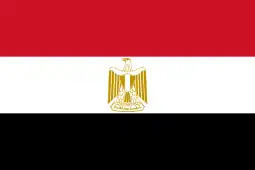| Sidi Arif Mosque | |
|---|---|
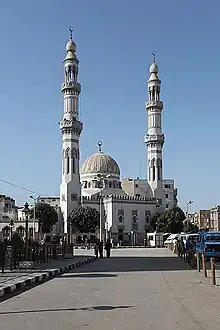 | |
| Religion | |
| Affiliation | Islam |
| District | |
| Province | |
| Ecclesiastical or organizational status | Mosque |
| Year consecrated | 14th century (the 8th century of the Islamic calendar) |
| Location | |
| Location | Sohag, Egypt |
| Geographic coordinates | 26°32′54″N 31°42′05″E / 26.54833°N 31.70139°E |
| Architecture | |
| Type | mosque |
| Style | Islamic |
| Completed | 1968 |
| Specifications | |
| Capacity | 1500 |
| Length | 51 m (167 ft) |
| Width | 33 m (108 ft) |
| Dome(s) | 1 |
| Dome dia. (outer) | 24 m (79 ft) |
| Minaret(s) | 2 |
| Materials | Concrete |
The Sidi Arif Mosque (also known as Masjid Al-Arif Bellah, Arabic: مسجد العارف بالله; transliterated: Masjid al-Aarif bi Allah) is one of the largest mosques in Sohag Governorate. It was built for the first time at the 14th century and was reconstructed several times; the last one was in 1968[1] and being renewed in 1998 for the last time. The mosque is named after the Sufi mystic buried in it, Sidi Arif, whose real name is Ismail ibn Ali ibn Abdussami, a member of the Ashraf family of mystics.[2]
Architecture
The mosque has two minarets and the roof is crowned by a dome, with a large prayer hall with split entrances, segregated for men and women.[3] The tomb of Sidi Arif is located in a room at the end of the mosque.
Next to the mosque is the tomb of Murad Bey, the Mamluk and bey of Egypt who ruled with Ibrahim Pasha.[4]
Burials
Sufi mystics
Ismail ibn Ali ibn Abdussami
Ahmad ibn Zarruq[5] (not to be confused with Ahmad Zarruq the Maliki-Sufi master)
Mamluk governors
Murad Bey Mohammed, bey of Egypt
Tourism
Every year the people of Sohag visit the mosque to celebrate the birthday, or Mawlid, of the saint.[6] The mosque is also visited because of the tomb it holds.
Gallery
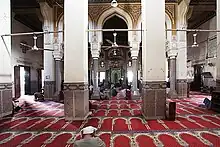 Inside the Sidi Arif Mosque
Inside the Sidi Arif Mosque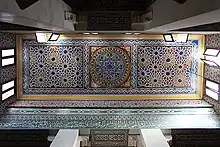 Dome of the Sidi Arif Mosque
Dome of the Sidi Arif Mosque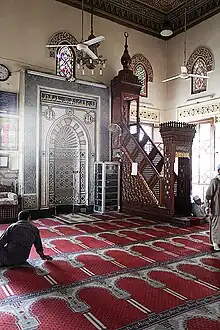 Mihrab and minbar of the Sidi Arif Mosque
Mihrab and minbar of the Sidi Arif Mosque
